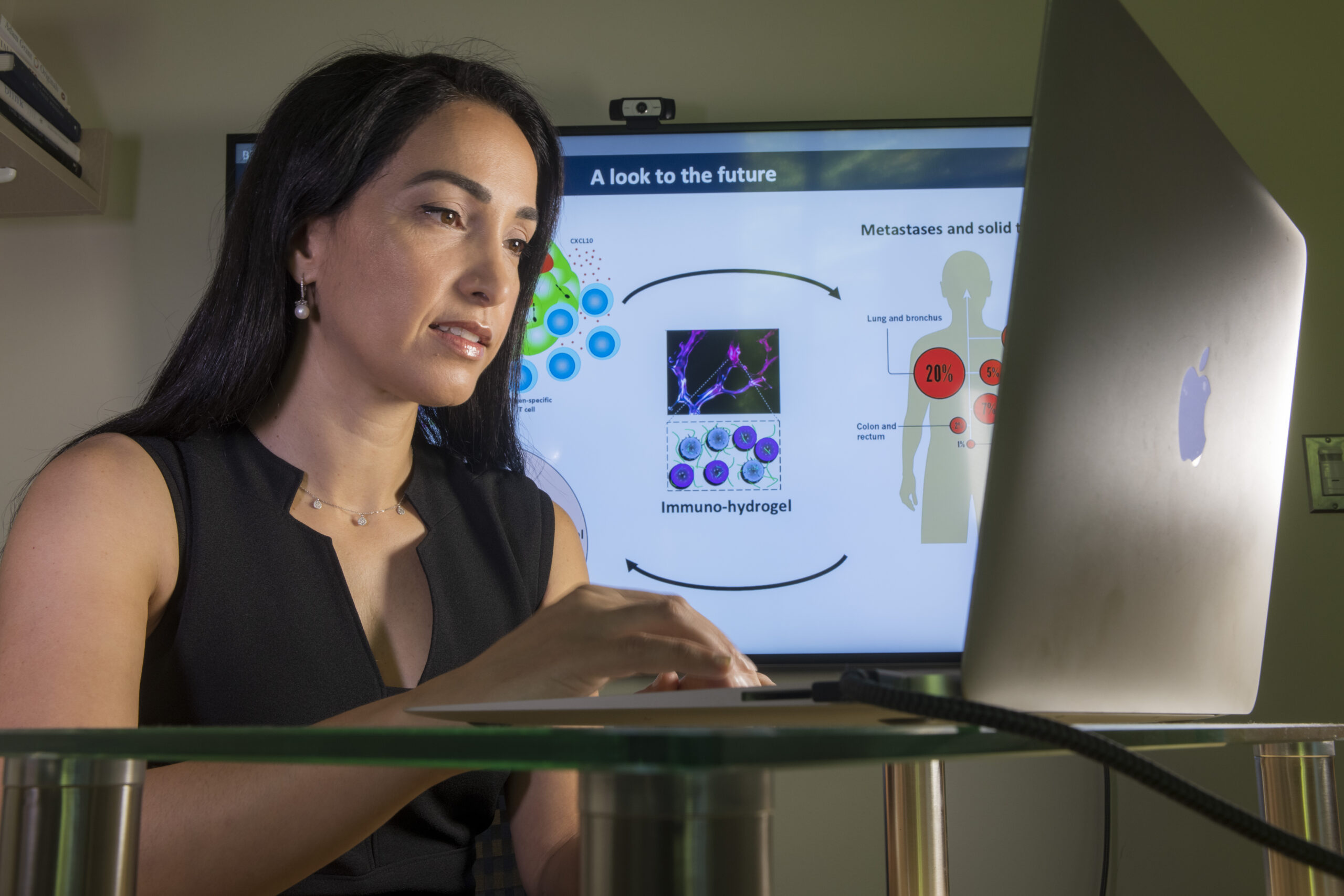
Natalie Artzi, PhD, is an assistant professor at Brigham and Women’s Hospital, Harvard Medical School; principal research scientist MIT; and an associate member of the Broad Institute of Harvard and MIT. A two-time Stepping Strong awardee, the Stepping Strong Scientific Advisor, and a recipient of the Brigham’s Bright Futures Prize, Artzi’s work focuses on leveraging material science, chemistry, imaging, and biology to design smart material platforms and medical devices to improve human health. Donna Woonteiler spoke with Artzi about her passion for propelling technologies from the bench to the bedside to benefit trauma patients.
Q: Thank you for talking with me today, Natalie. Tell us a little about your background.
A: As a graduate student at the Technion—Israel Institute of Technology, I studied chemical engineering under the direction of Professor Moshe Narkis and became interested in understanding the structure:function relationships of materials. My post-doctoral training with Professor Elazer Edelman at MIT focused on studying tissue:biomaterial interactions to inform the design of tissue-responsive biomaterials for diagnosis and for therapy. Today, my lab is interested in using such materials for gene therapy, drug delivery, and to probe and reprogram our body’s own immune system to combat disease.
Q: What drew you to using your knowledge and skills to solve challenges for trauma patients?
A: As a scientist, I recognize the enormous value of advancing care through impactful research. But unlike other areas, trauma has no “home” in the NIH. Only 3.7% of all NIH grants are trauma-related, representing just 2.9% of the total NIH budget, despite the fact that trauma is the leading cause of death from ages 1 to 46 years in the US. We need to change that paradigm and Stepping Strong is focused on filling this void.
Q: Tell us about your new role as the Stepping Strong Scientific Advisor. What do you hope to achieve?
A: In my new role I seek to foster collaborations and establish a robust mentorship program for Stepping Strong clinicians, researchers, and community partners.
The Stepping Strong Center is home to a group of extremely talented innovators who are eager to make a difference. At the same time, there is what I call an “energy barrier” that sometimes prevents researchers from bringing effective therapies to the clinic. I hope to improve on that process through the establishment of a new Stepping Strong Accelerator program.
Q: How would the Accelerator work?
A: The goal is to equip our community with the tools and skills to translate their technologies to the clinic. How do we do that? First by matching researchers with clinicians to maximize collaborations and promote innovation; by teaching entrepreneurial skills; and by offering a menu of services—grant writing, intellectual property protection, product development, manufacturing and regulatory considerations, including introductions to venture capitalists.
“Science is still very much a man’s world. I would like to move the needle in some small way. That means mentoring women on how to deliver a pitch, offering best practices on protecting their technology, and coaching them to close a deal.”
I will also add that science is still very much a man’s world. Women start far fewer companies than men do despite the same output. I would like to move the needle in some small way. That means teaching women how to deliver a pitch, offering best practices on protecting their technology, and coaching them on how to close a deal.
Q: You are an expert on developing effective drug delivery technologies that improve patient health. What therapeutic modalities or approaches are the most successful?
A: Technologies that consider our evolving understanding of disease immunobiology, patient-specific characteristics, as well as optimal delivery regimen and administration mode are likely to enhance outcomes while minimizing side effects. We are learning that patients benefit from localized drug delivery using minimally-invasive procedures rather than systemic and nontargeted approaches. Our ability to deliver combination therapies that are able to restore the function of our body’s own immune system together with clinically-available modalities show a lot of promise.
For instance, my team has developed a dual-therapy hydrogel that is capable of selectively delivering antibiotics to bacterial cells to reduce infection after traumatic bone injuries, thus killing the infection while simultaneously delivering the necessary cues to enhance fracture healing. We also discovered that the same material design principles—using targeting nanomedicines that are selectively delivered to specific cell populations—can also reveal and kill cancer cells.
Q: You are doing fascinating work. Congratulations on your many accomplishments and thanks again for your time today. Any last thoughts you would like to share with our readers?
A: I have participated in Stepping Strong Center activities since 2018 when I received my first award. Since that time, I have witnessed the center’s remarkable growth as a leading trauma research enterprise. I am excited to lead the center’s new Accelerator program at a time when many of our researchers are exploring ways to commercialize their products, thereby harnessing the power of their innovations.
